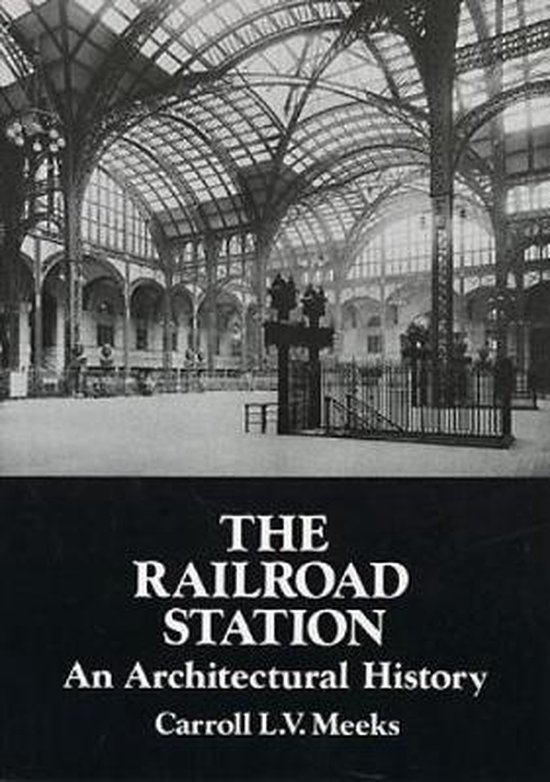
The Railroad Station
"An engrossing book. A rich and extraordinary interesting account of the buildings themselves and of one aspect of the interaction of culture and technology. The many illustrations are a joy." — Scientific American
This profusely illustrated book chronicles the evolution of the architecture of the railroad station in both Europe and America from the 1930s and 1950s. It begins with the earliest train-sheds and follows the progress of station design to the great structures erected in the Victorian Era — London's Charing Cross Station (1862–64) and Berlin's Anhalter Bahnhof (1872–80) among them.
Landmarks such as New York's Pennsylvania Station (1906–10), designed by McKim, Mead & White, begin the panorama of twentieth-century structures. The story ends mid-century, in the gathering twilight of the railroading era, with such conceptions as Cincinnati's Union Station (1926–33) and Rome's Second Stazione Termini (1931–51).
This great cavalcade of architecture illustrates year by year how the approach to station design developed along with the perceived power of the railroad to mobilize masses of people, revolutionize trade, influence the course of national and international interests, open frontiers, facilitate the rise of suburbia, and more. Fully examined is the station's role as an essential part of a new system of transportation with tremendous power to effect social, economic, and political change.
Throughout the book, Dr. Meeks, late Professor of the History of Architecture at Yale University, follows chronologically the station's progress as architecture serving new functions; as an engineering challenge, especially in the construction of huge roofs in new materials; and as a work of art expressing taste and cultural ambition. More than 230 illustrations — photographs, illustrations, floor plans, cutaways, and more — bring vividly to life one of architecture's most fascinating stories.
"Carefully documented by all the apparatus of exacting scholarship, and even better by a fascinating collection of more than 230 pictures." — The New York Times Book Review
This profusely illustrated book chronicles the evolution of the architecture of the railroad station in both Europe and America from the 1930s and 1950s. It begins with the earliest train-sheds and follows the progress of station design to the great structures erected in the Victorian Era — London's Charing Cross Station (1862–64) and Berlin's Anhalter Bahnhof (1872–80) among them.
Landmarks such as New York's Pennsylvania Station (1906–10), designed by McKim, Mead & White, begin the panorama of twentieth-century structures. The story ends mid-century, in the gathering twilight of the railroading era, with such conceptions as Cincinnati's Union Station (1926–33) and Rome's Second Stazione Termini (1931–51).
This great cavalcade of architecture illustrates year by year how the approach to station design developed along with the perceived power of the railroad to mobilize masses of people, revolutionize trade, influence the course of national and international interests, open frontiers, facilitate the rise of suburbia, and more. Fully examined is the station's role as an essential part of a new system of transportation with tremendous power to effect social, economic, and political change.
Throughout the book, Dr. Meeks, late Professor of the History of Architecture at Yale University, follows chronologically the station's progress as architecture serving new functions; as an engineering challenge, especially in the construction of huge roofs in new materials; and as a work of art expressing taste and cultural ambition. More than 230 illustrations — photographs, illustrations, floor plans, cutaways, and more — bring vividly to life one of architecture's most fascinating stories.
"Carefully documented by all the apparatus of exacting scholarship, and even better by a fascinating collection of more than 230 pictures." — The New York Times Book Review
| Auteur | | Carroll L.V. Meeks |
| Taal | | Engels |
| Type | | Paperback |
| Categorie | | Kunst & Fotografie |